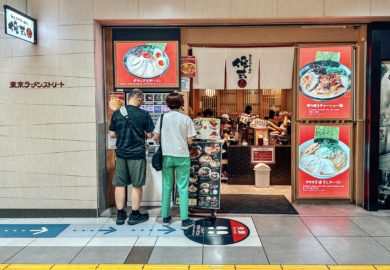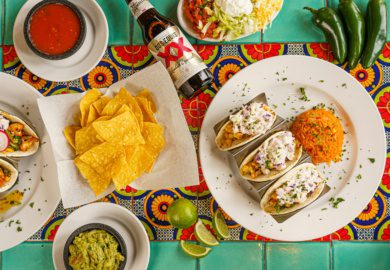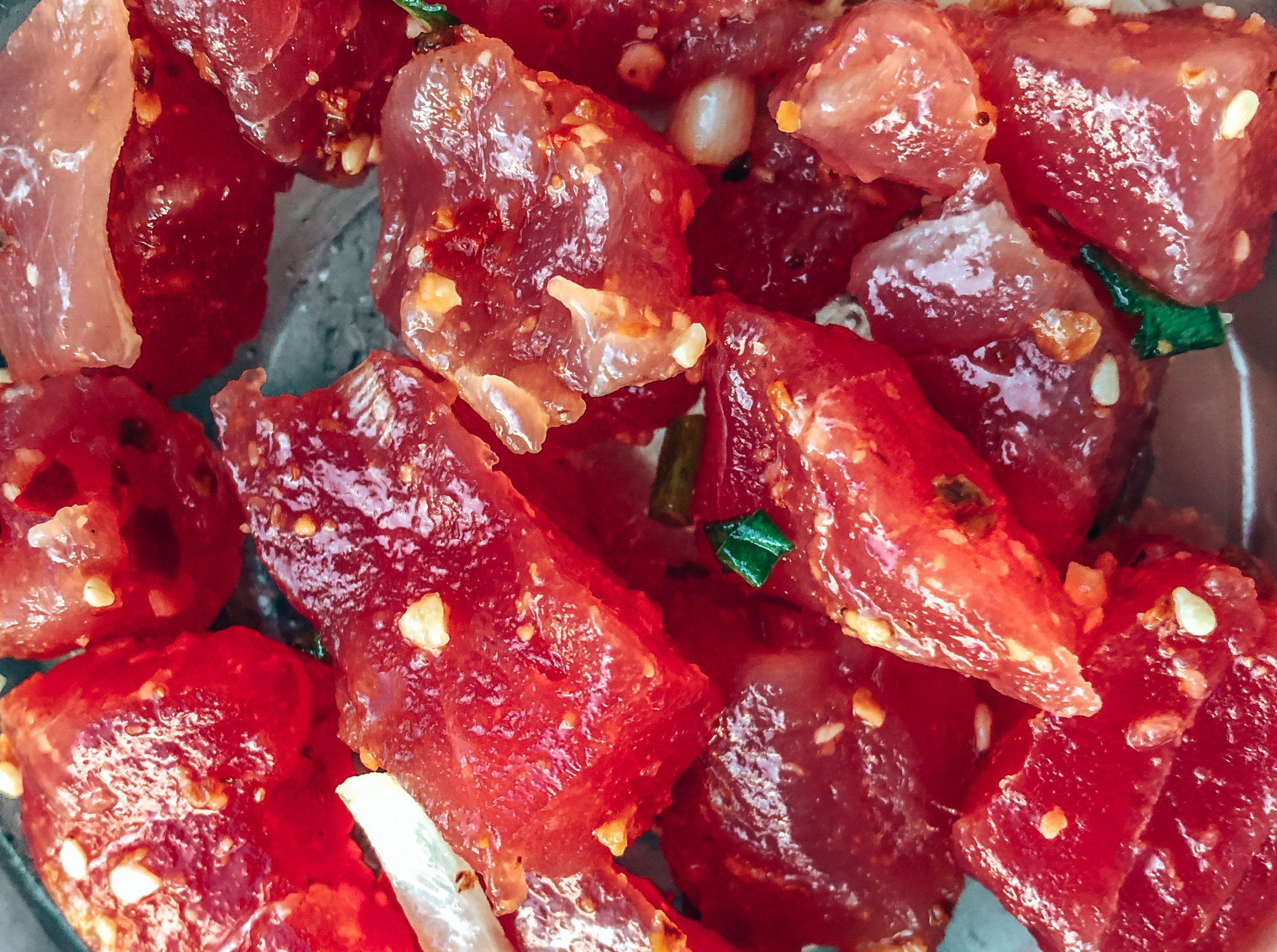
What is Poke And Why You Won’t Find Poke Bowls in Hawaii
Poke bowls have taken the online – and offline – world by storm and confused us all as for what poke actually is.
Instapoke
Typically for Instagram, it’s style over substance. The ‘gram has been deciding how and what we eat. It is not a secret for digital creators in the food industry, myself included, that bowls tend to perform better and get more engagement on social media. “The Algorithm” loves the seemingly innocent smoothie bowls, buddha bowls or açai bowls. With poke bowls, however, the #instafood craze put a cherry on the cake of the decades-long process of commodification and appropriation of Hawaiian culture.
Let’s straighten up the basics first – it’s poke not poké . I admit I even made this mistake myself, having first heard of the dish from one of the countless “poké bowl bars” that had popped up around Los Angeles.
Book Lanai Tabura curated Private Aloha Plate Food Tour or Hawaii Food Tour – Off The Beaten Path on Viator and explore Hawaiian style poke with local experts!
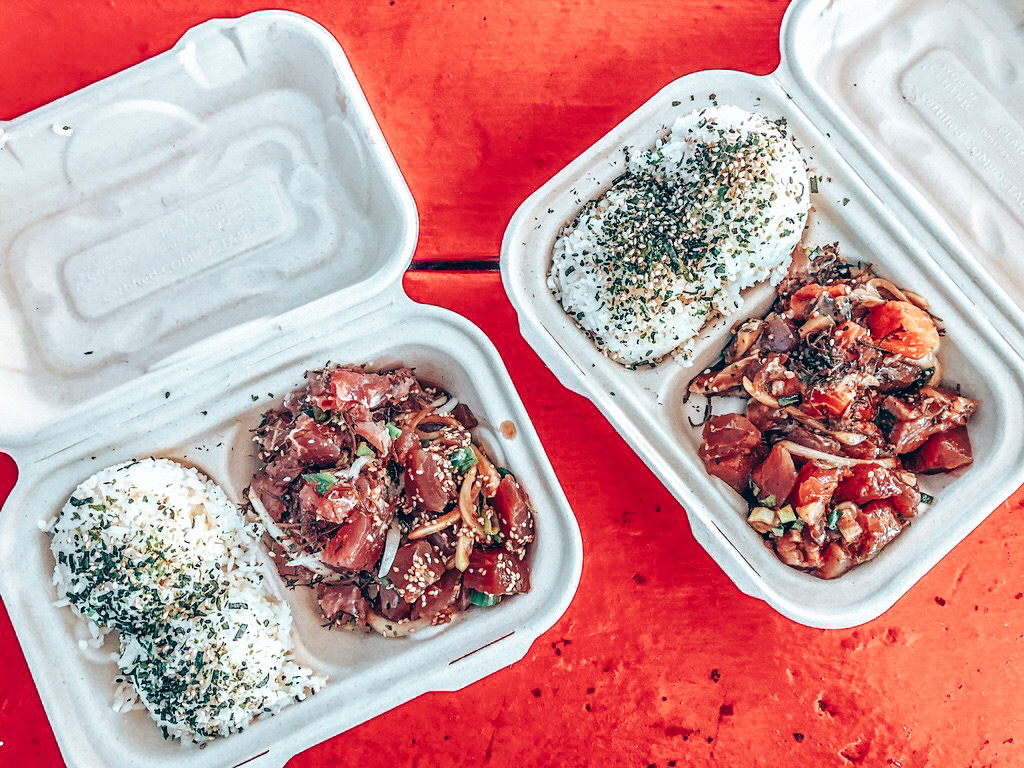
As Hawaiian chef Mark “Gooch” Noguchi put it talking to First We Feast:
“That may seem like a minor modification, but as someone born and raised in Hawaii, its implications resonated. Poke is a word—poké and poki are not. It would be like if I didn’t know how to pronounce your last name and said, screw it, and changed it around. You don’t just change a word to sell it better. A word has meaning. Hawaiians have gone our entire lives explaining to visitors that it’s called poke (“poh-kay”), not “pohk.” That was part of the process—teaching and explaining what it is.”
A bit of history
Poke is rooted in the days when native Hawaiian fishermen would cut up whatever reef fish (i.e. near-shore fish) was on hand and serve it raw, seasoned with sea salt, seaweed or limu, a kind of algae. With the arrival of Japanese workers in the late 19th century and the advent of more advanced fishing fleets in the Pacific, the predominant poke fish choice shifted from reef species to deepwater fish, mainly ahi.

Indeed, ahi tuna still dominates Hawaiian poke today. Except now it also includes the chain poke bars across the mainland US and elsewhere in the world. At a chain restaurant level, a scale so much larger than within Hawaii, it makes using the finite fish like ahi tuna extremely unsustainable. On the other hand, as many poke bowls are increasingly turning to farmed salmon and other fish types instead, it makes them this much less “Hawaiian”. Not to mention the myriad of colorful photogenic toppings, virtually unheard of in Hawaii.
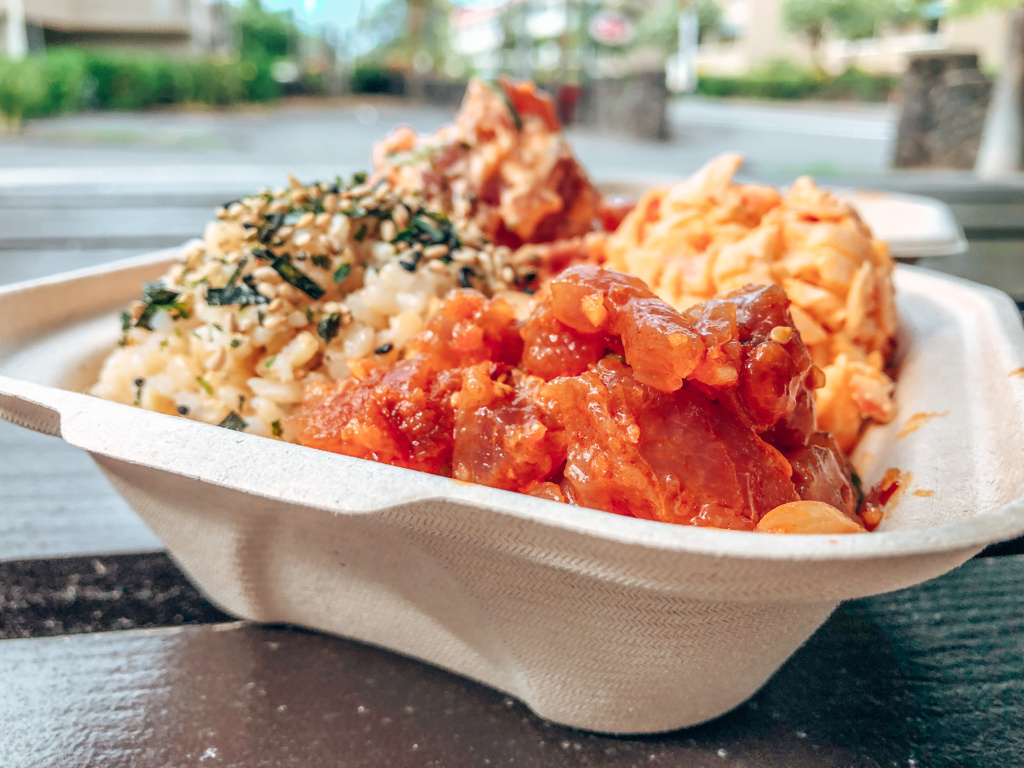
Not sure which way the trend is going to go moving forward. But as consumers of Hawaiian cuisine and culture, at the very least we should be aware and respectful of what is poke. And where it comes from.
Grocers not gourmet
Cubed marinated raw fish (the word “poke” means to cut in Hawaiian), poke is most definitely not served in a bowl in the Aloha State. Unless you count the round plastic containers in which poke is sold at the local supermarkets by the pound. Walk into a Foodland or a KTA store in Hawaii and you’ll find entire counters dedicated to take-out poke. There will be ahi marinated with shoyu, Hawaiian-style or my favorite – spicy mayo. You might find specials such as ginger, sesame, or deconstructed California roll. Sold by weight and then scooped into plastic tubs, they are anything but instagrammable. Take it home and serve cold poke with freshly cooked rice – family style. Alternatively, have a picnic in one of the many beach parks.
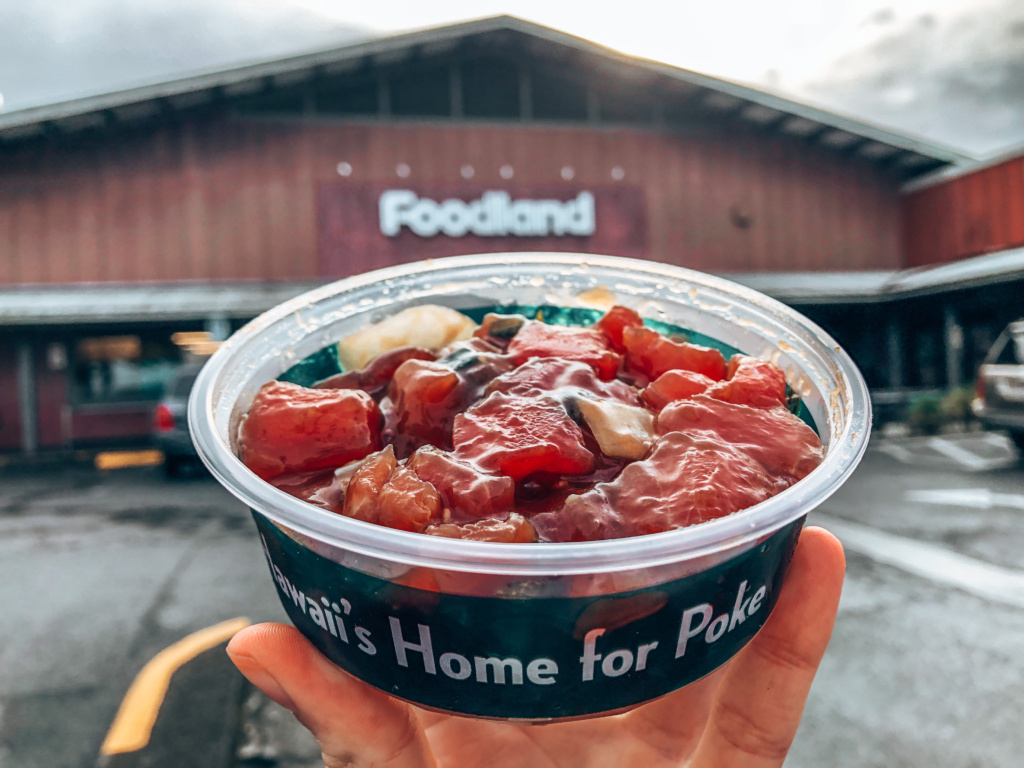
While it’s true that there are poke “bars” across Hawaii, poke there is not served in bowls. If it is, steer clear – it’s an easy tell tale sign that the locale caters to tourists, not Hawaiians. Yes, there are venues in Hawaii dedicated to a more upscale poke served in bowls, such as Umekes on the Big Island. Places where tradition is honored but ingredients are elevated and experimented with. It’s a third wave poke movement led by acclaimed Hawaiian chefs such as Ernie Gray Jr. or Nakoa Pabre. But that’s a story for another post.
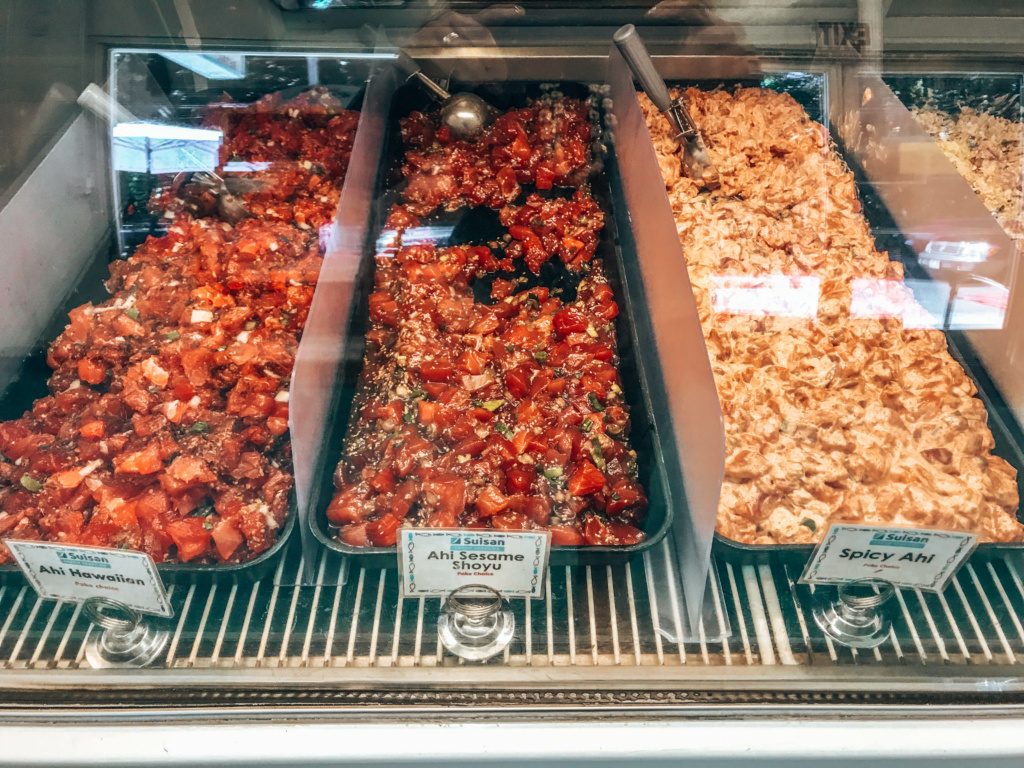
You might also like: BEST POKE ON THE BIG ISLAND: 7 PLACES YOU SHOULD TRY
No frills affair
Some of the best old-school poke shops in the Aloha State double as grocers or resemble mini fish markets. Indeed, some such as the long-standing Hilo Suisan Fish Market, have the word ‘market’ in the name. Then there’s Tamura’s liquor store on Maui. Or Ono Seafood on Oahu that started off as poke sold from a garage. No millennial pink on the walls there, no photo ops, no hip looking sliced avocados. Definitely no kale or zoodles. Just fresh cubed catch of the day prepared with traditional indigenous Hawaiian ingredients. Think limu, ogo, inamona, tobiko or Maui onion. Served simply over warm rice.
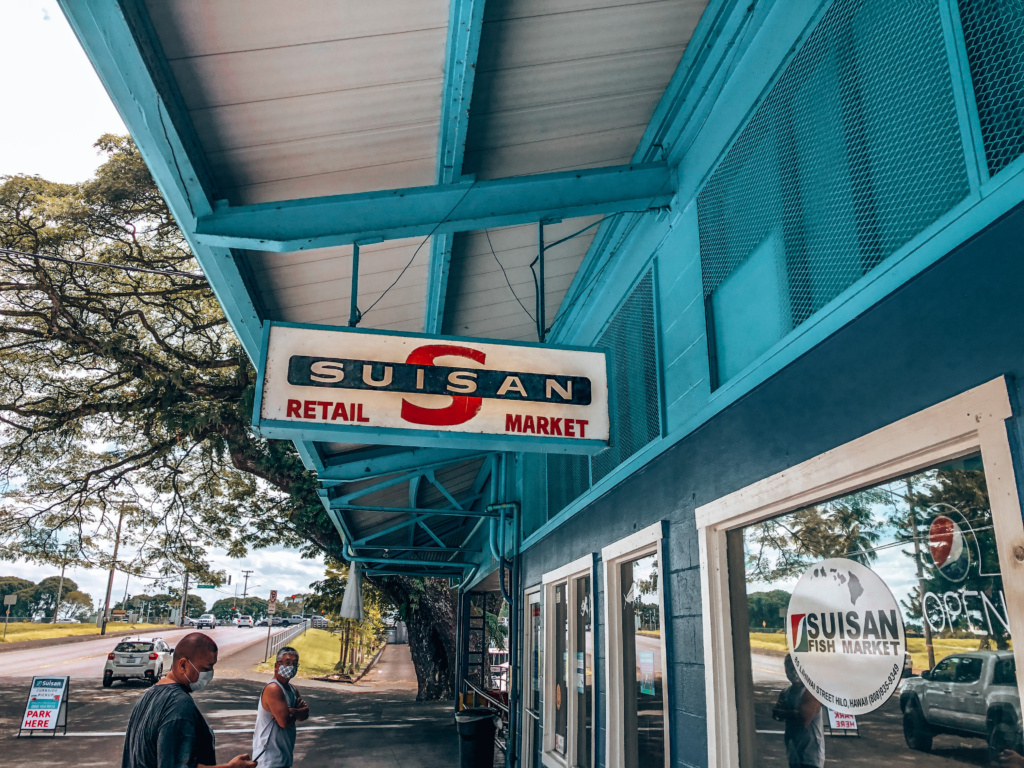
Aside from ahi tuna you’ll also likely find ono, hamachi, shrimp or tako i.e. octopus. You will probably need to choose between a small bowl with one scoop of rice and one poke selection or a larger bowl with two scoops of rice and two kinds of poke. Both sizes will include one or two sides of your choice. The usual selection of side dishes includes seaweed salad, lomi lomi (chopped tomatoes with small chunks of salmon), kimchi, edamame or cucumber salad.
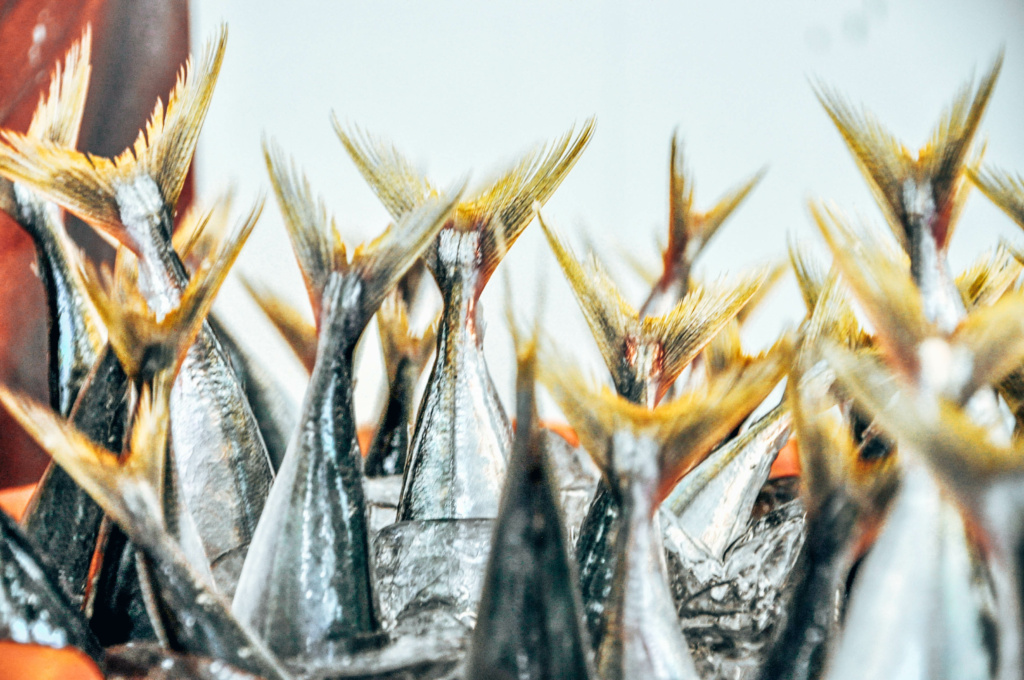
The only frill you’ll find in those poke joints is the delicious furikake spice mix. Don’t forget to ask for it as in most places it’s an optional topping. You might also find brown rice as an alternative to white. Brown rice may cost you a dollar or so extra, while the furikake topping is usually free. Do as the locals do and ask for some shoyu (soy sauce) on your rice. Your rice, poke and side dish selection will be more often than not tossed unceremoniously into a rectangular take out container. Far cry from a pretty insta-friendly mainland poke bowl. But it will be onolicious. And very Hawaiian.
You might also like: WHERE TO EAT MALASADAS IN HAWAII – OUR 5 FAVORITES, DINNER AT TIFFANY’S: BEST FOOD IN MAUI YOU NEVER HEARD OF
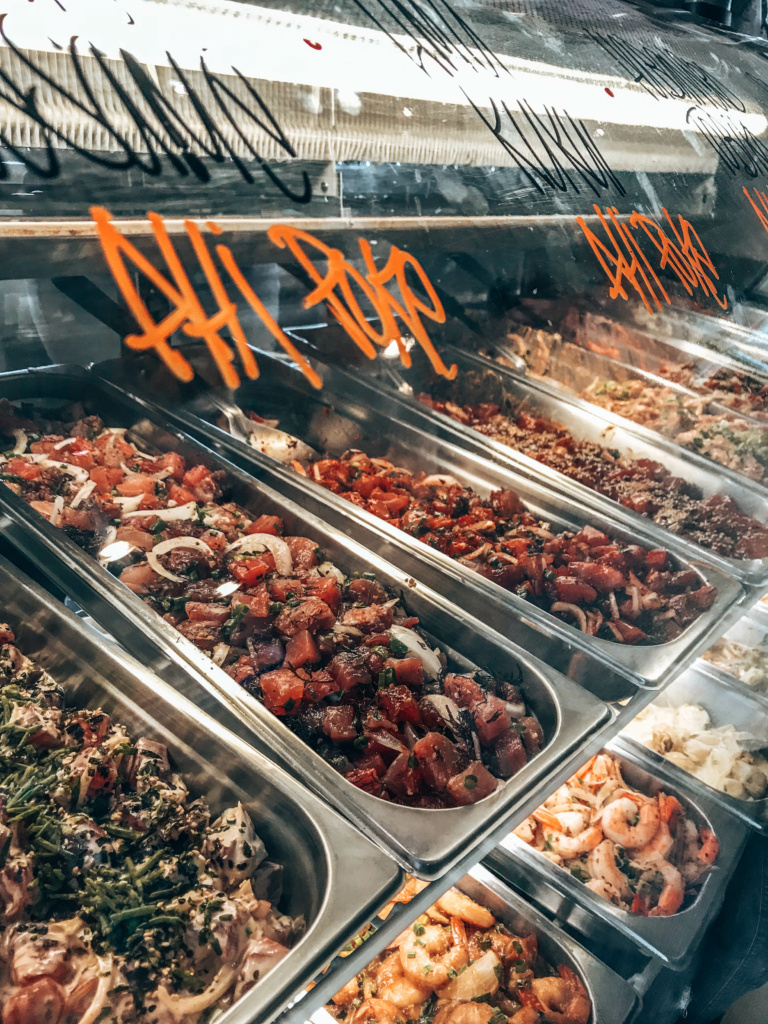


Make it an homage
True, not everyone will get a chance to travel to Hawaii or even mainland US. The poke trend is on the rise everywhere from Prague to Peru. Which is fantastic if you ask me because Hawaiian cuisine does deserve its place on the global food scene. But it resulted in what some call the Poke Paradox. Not to mention the so-not-aloha attempts by mainlanders to trademark the concept. Poke to Hawaiians is so much more than just food. It is Polynesian legacy. It is not ours up for grabs.
Whether you’re enjoying a fast casual poke lunch in London, or making it yourself at home in Lima, try to understand this legacy and make sure your poke does justice to the rich Hawaiian culture. Make it an homage to, not an appropriation of Hawaii. Poke is not just a fast casual protein. Don’t let it be the next Mai Tai, even as it becomes the next Chipotle.
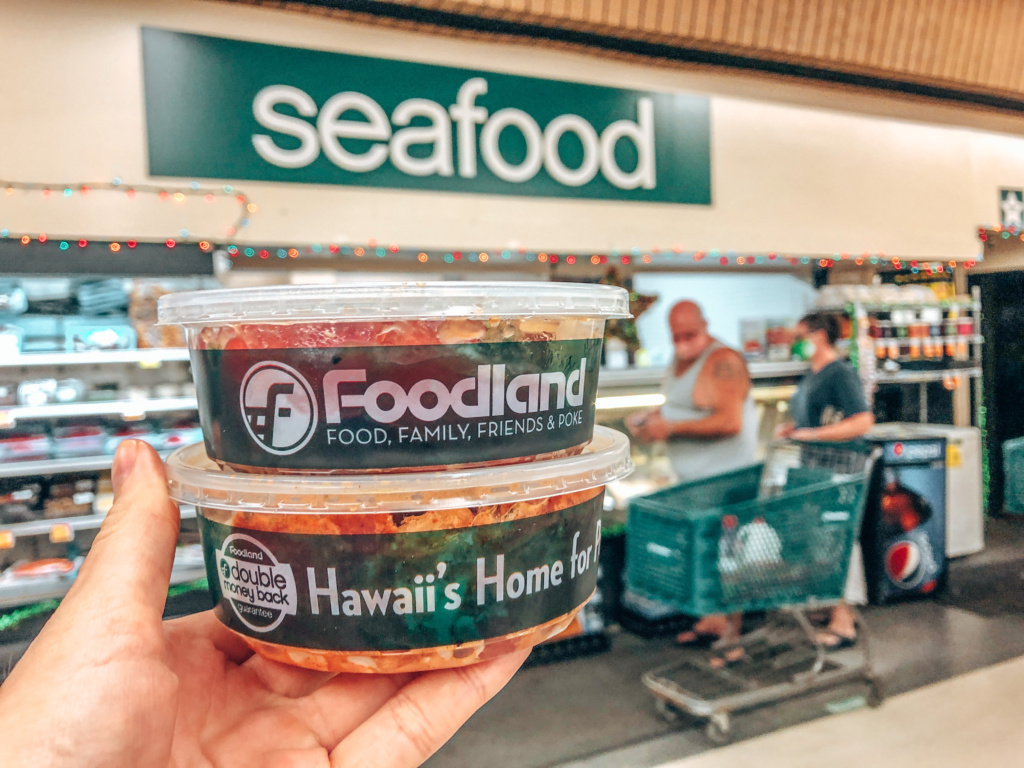
Look beyond sources such as this one from British Women’s Health which features not one, not two but three different spellings of the dish – poke, pokē and poké – interchangeably. The authors invite us to “smoothie bowl it for breakfast, Buddha bowl it come lunch but what happens when it gets to dinner and, well, you’d rather dish it up than plate it out? Two words: poke bowl.”
Book Lanai Tabura curated Private Aloha Plate Food Tour or Hawaii Food Tour – Off The Beaten Path on Viator and explore Hawaiian style poke with local experts!
You’re part of the story
Again, in the words of chef Noguchi, because as a non-Hawaiian I don’t think I can ever find adequate words myself:
“The poke trend puts Hawaiian cuisine in the spotlight, and that’s a positive thing. It deserves attention. But seeing it get press outside the islands is conflicting because of how personal food is for Hawaiians. We’re hardcore connected to our food, and if you’re not connected spiritually to our culture, there’s no amount of Instagram posts or Snapchats that is going to teach you who we are.”
As with every cuisine, our message at Around the World in 80 Flavors is the usual: get to know the people through their food. Food equals identity. Learn before you eat, research before you take a picture, respect it as you enjoy it. Every dish, every recipe, every ingredient represents someone’s story. In the case of poke, the story is now being written outside of Hawaii. And you’re a part of it.
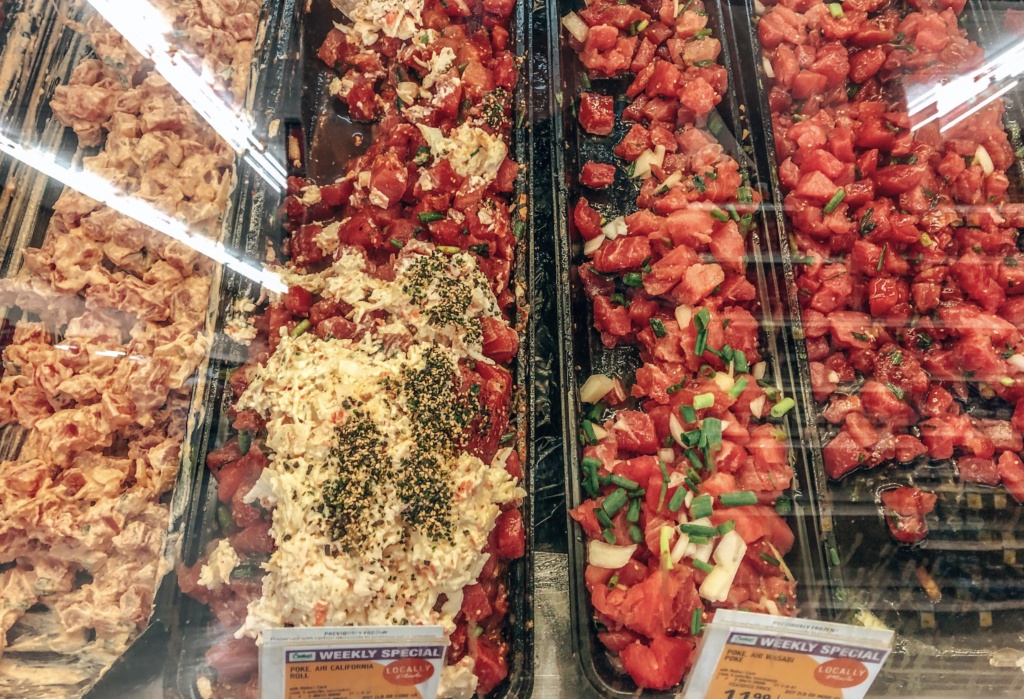
Have you had poke? What was your experience? Let us know in the comments below or tag @eightyflavors on social media!
OUR TRIED AND TESTED FOOD TRAVEL RESOURCES: Book a hotel with Booking.com. Search for the best flight deals on Skyscanner. Find the best local food tours on Viator. Browse curated conscious group trips with GAdventures. Get your travel insurance with World Nomads.
Disclaimer: this post contains affiliate links. We’ll receive a small commission if you purchase through the link provided, at no extra cost to you. It allows us to continue running this blog. Thanks for your support!

